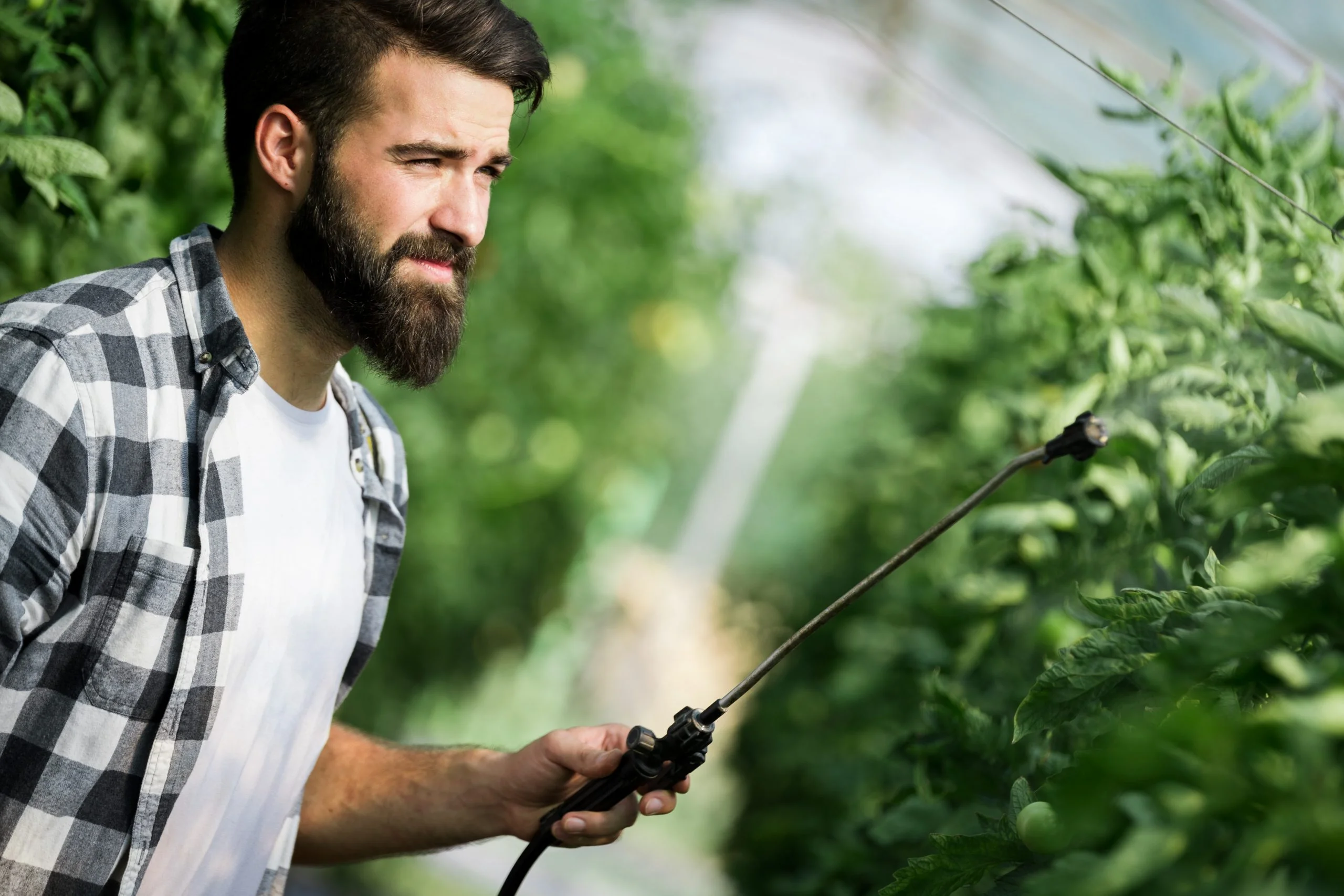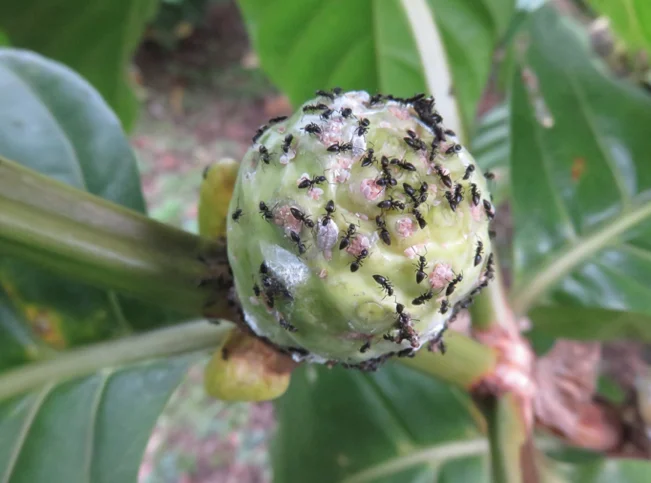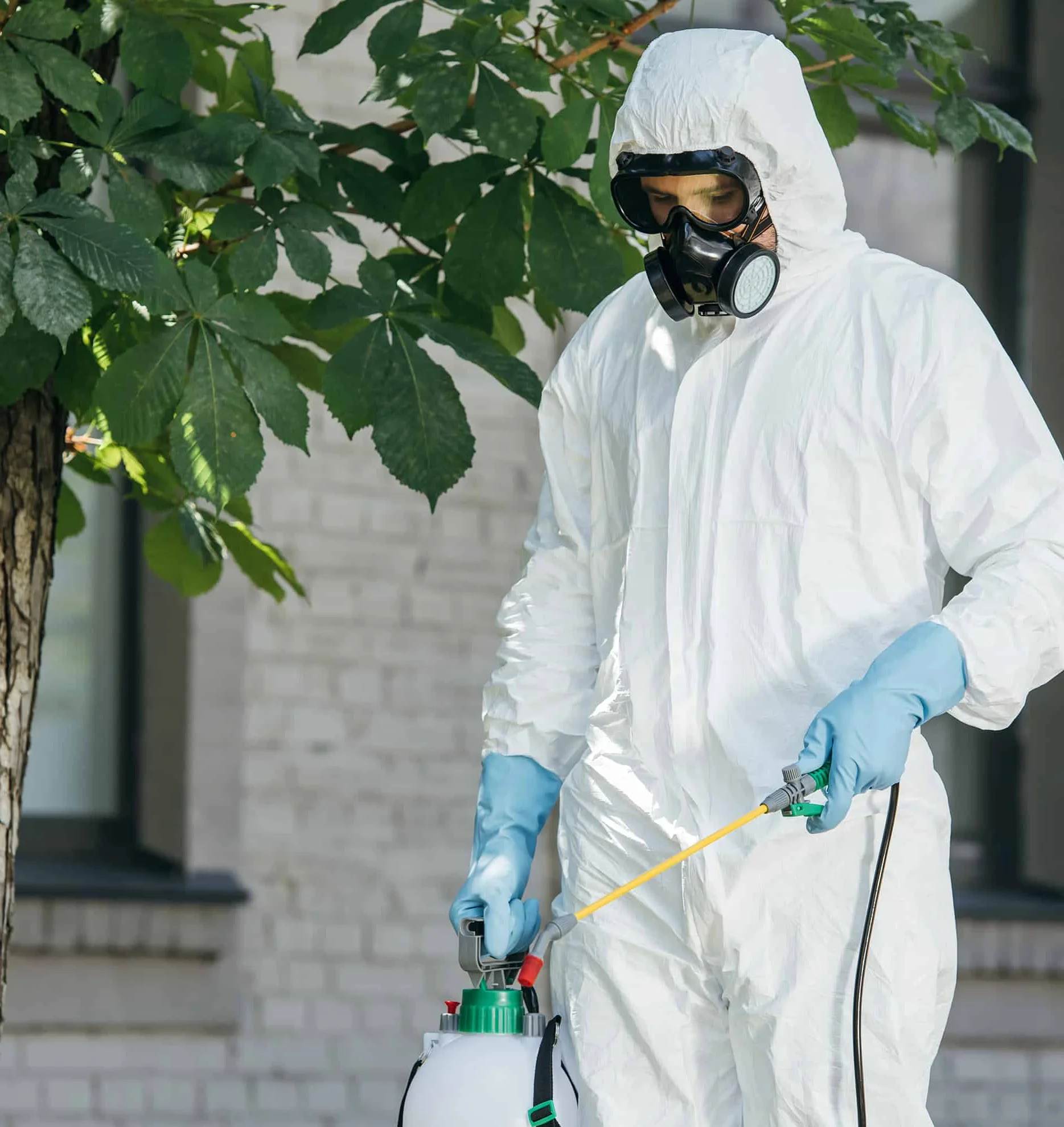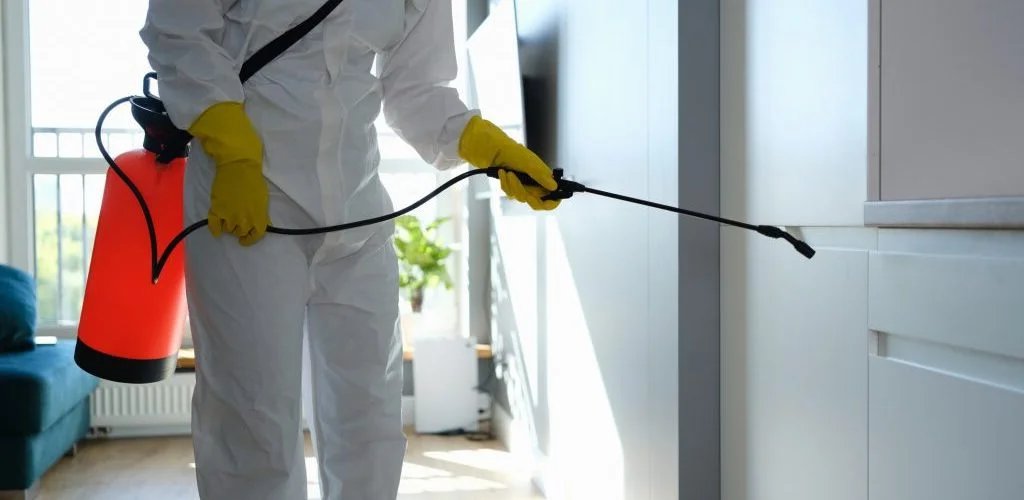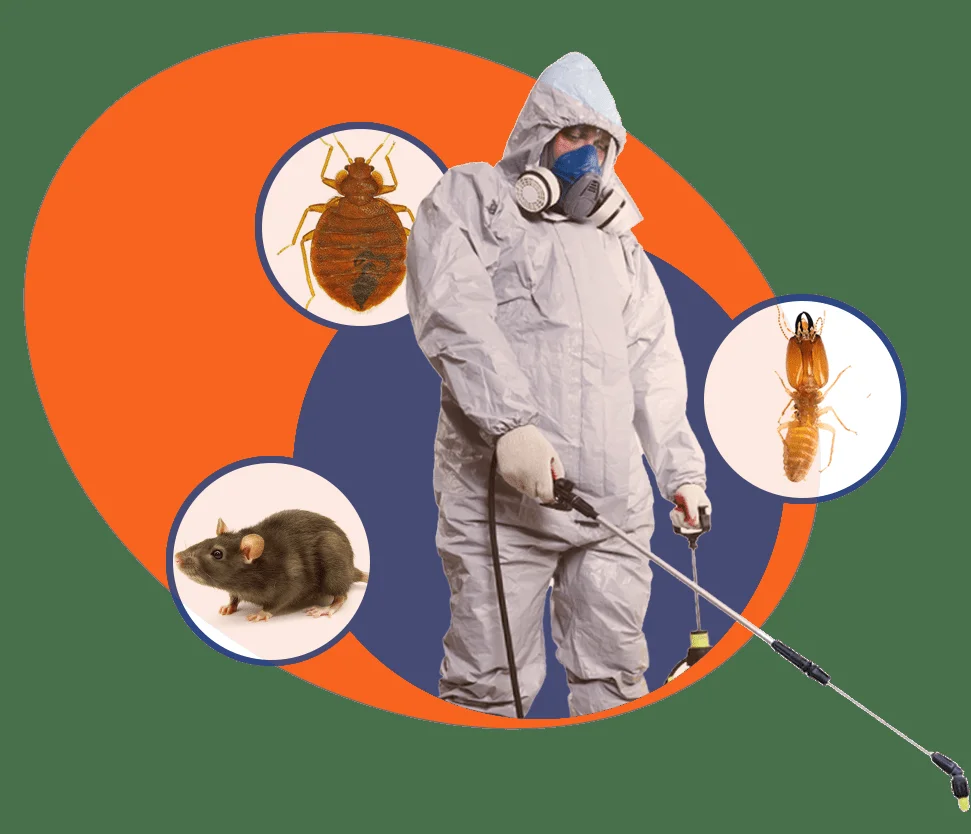From majestic mountain ranges to vast high plains, Wyoming's diverse landscapes create unique pest management challenges. The state's high desert climate with dramatic temperature swings—scorching summers and frigid winters—influences pest behavior and creates distinct seasonal patterns. Professional pest control in Wyoming requires understanding these regional factors – the high elevations, arid conditions, rural properties, and extreme weather fluctuations all contribute to the state's specific pest pressures.
Homes and businesses throughout Wyoming face persistent challenges from pest infestations that can damage property, threaten health, and disrupt daily life in both rural and urban settings. That's why many residents rely on professional exterminators who understand Wyoming's specific environmental conditions. Local experts recognize that both preventive approaches and targeted treatments are essential to maintaining pest-free properties in Wyoming's challenging climate. In this guide, we'll explore common Wyoming pest challenges, effective management strategies including eco-friendly pest solutions, and why partnering with local professionals ensures the best protection for your home or business.
Dealing with a pest problem in Wyoming? Our statewide team provides
emergency pest control
24/7 and thorough
pest inspections to protect your property.
Contact us for reliable service anywhere in Wyoming!
Pest Control Challenges Specific to Wyoming
Wyoming's unique environment creates distinctive pest control challenges that require specialized knowledge and approaches. Here's why pest control in Wyoming demands tailored solutions:
-
Extreme elevation differences Wyoming's elevations range from around 3,100 feet to over 13,000 feet, creating dramatically different pest ecosystems across relatively short distances. Higher elevation areas like Jackson, Laramie, and Sheridan experience different pest species, seasonal timing, and treatment effectiveness than lower elevation communities. This vertical zonation means pest management strategies effective in one Wyoming community may require significant adjustment in another, even those separated by relatively small geographical distances.
-
Dramatic temperature fluctuations Wyoming's continental interior location creates some of the most extreme temperature variations in the country, with summer days potentially reaching 100°F before plummeting 40+ degrees at night. These dramatic daily and seasonal swings influence pest behavior, reproduction cycles, and treatment efficacy. Winter temperatures frequently dropping well below zero drive intense rodent pressure on structures, while the brief summer season compresses insect activity into intense periods requiring precise timing for effective management.
-
Persistent aridity As America's second driest state, Wyoming's low humidity and minimal precipitation create unique pest dynamics not seen in more humid regions. Many insects that thrive in moisture-rich environments struggle in Wyoming's arid conditions, but specialized desert-adapted pests flourish. This aridity also affects how treatments perform and persist in the environment, often requiring modified application techniques and specialized formulations designed for dry conditions where traditional approaches may prematurely degrade or fail to distribute effectively.
-
Rural isolation Wyoming's position as America's least populated state means many properties exist in isolated settings far from urban centers. Rural ranch properties, remote vacation homes, and isolated businesses face distinct pest challenges including wildlife interactions not commonly encountered in more developed areas. These isolated properties often experience delayed detection of developing problems while facing limited service availability compared to more populated states, making preventive approaches particularly important.
-
Fierce Wyoming winds The state's legendary persistent high winds impact both pest behavior and treatment effectiveness. Strong winds affect flying insect activity patterns, disperse certain pests while concentrating others in wind-protected microclimates, and create significant challenges for exterior treatments. Specialized application equipment and techniques developed specifically for Wyoming's windy conditions are often necessary for effective results, particularly in consistently windy regions like Casper, Rawlins, and Cheyenne.
These factors make informed, locally-appropriate pest prevention particularly important for Wyoming property owners. Professional pest management companies familiar with the state's unique environmental challenges can develop customized strategies that work effectively despite Wyoming's challenging conditions.
Common Pests in Wyoming
Wyoming's unique environments support several persistent pests that create ongoing challenges for homes and businesses. Here are the most common invaders Wyoming properties encounter:
Miller Moths & Overwintering Pests
Technician treating for overwintering pests in Cheyenne
Miller moths create significant seasonal nuisance issues throughout Wyoming during their annual migrations, with particularly intense activity in eastern Wyoming communities along the Front Range. These relatively harmless but incredibly annoying insects enter homes in massive numbers during their migration periods, typically peaking in late spring through early summer. While not structurally damaging, their sheer numbers and attraction to light sources make them a major irritant for Wyoming residents.
Beyond Miller moths, Wyoming homes face seasonal invasions from various overwintering pests seeking shelter before winter. Box elder bugs, conifer seed bugs, cluster flies, and certain lady beetle species enter structures in fall to escape freezing temperatures, emerging indoors during warm winter days. Professional management focuses on exclusion techniques and targeted preventive treatments to exterior entry points before these seasonal invaders move inside. Once these pests have entered wall voids and attic spaces, control becomes significantly more challenging, making preventive approaches the most effective strategy for Wyoming homes.
Rodents
Rodent exclusion work on a Laramie property
Wyoming's harsh winters drive significant rodent pressure on structures as mice and rats seek shelter from extreme temperatures. House mice are ubiquitous throughout the state, while Norway rats typically concentrate in urban areas and near agricultural operations. Rural properties and those near open fields often experience deer mouse invasions, creating potential exposure to hantavirus—a serious health concern in the Mountain West region. Wyoming's many vacation properties and seasonal cabins are particularly vulnerable when unoccupied.
Effective rodent control in Wyoming's challenging environment requires comprehensive approaches adapted to both property type and location. Professional management typically combines thorough exclusion work to seal entry points (particularly critical before Wyoming's harsh winters), strategic placement of monitoring and control stations, removal of attractants, and ongoing maintenance to prevent reinfestation. For rural properties, ranches, and homes near natural areas, specialized attention to potential wildlife interactions and adaptations to address deer mouse intrusions are particularly important to protect both property and health.
Ants
Treating for carpenter ants in a Cody residence
Several ant species create persistent challenges for Wyoming properties, with field ants and pavement ants being particularly common across the state. In higher elevation forested areas like those surrounding Jackson, Pinedale, and Sheridan, carpenter ants can create structural concerns as they excavate wood to establish nests. Wyoming's arid environment also supports harvester ants in many areas, which can create large, barren clearings around their colonies and deliver painful stings when disturbed.
Professional ant management in Wyoming begins with accurate species identification, as control strategies differ significantly depending on ant type. Effective treatment typically combines direct nest applications when nests are accessible, strategic perimeter protection, targeted bait placement, and habitat modification recommendations to address conditions attracting ants to the property. For carpenter ants in mountain homes and properties near forests, specialized inspection techniques help locate parent colonies that are often hidden within structures or in nearby landscape features. Wyoming's dry climate also requires adjustment to application methods and product selections to ensure maximum effectiveness.
Spiders
Wyoming's diverse environments support numerous spider species, creating consistent concerns for many homeowners. While most Wyoming spiders pose no health threat and play beneficial roles in controlling other pests, several species generate significant anxiety, including the yellow sac spider, wolf spiders, and cellar spiders that commonly enter structures. Of particular concern, black widow spiders exist throughout the state, especially in protected exterior areas like wood piles, sheds, and undisturbed storage areas. Though rare, Wyoming also falls within the potential range of brown recluse spiders in some southern portions of the state.
Effective spider management combines several approaches including regular removal of webs, modification of exterior lighting that attracts the insects spiders feed upon, reduction of harborage areas through landscape maintenance, and strategic perimeter treatments to prevent entry. For properties with recurring brown widow concerns, specialized inspection and targeted treatment of likely harborage areas provides protection while minimizing unnecessary product applications. Wyoming's drier climate often concentrates spiders around moisture sources, making plumbing areas, evaporative coolers, and irrigation systems important inspection points when addressing spider concerns.
Wasps & Stinging Insects
Wyoming's short but intense summer season creates concentrated pressure from various stinging insects, particularly paper wasps, yellow jackets, and hornets. These colonies typically begin with spring nest establishment, grow exponentially during summer months, and reach peak aggression and population size in late summer before declining with autumn's arrival. Wyoming's abundant outdoor recreation and agricultural activities create frequent human-wasp interactions, particularly around picnic areas, outdoor dining spaces, and agricultural operations where yellow jackets are attracted to food sources and sweet beverages.
Professional management of stinging insects focuses first on locating and treating established nests, which may be found under eaves, in wall voids, within landscape features, or in underground burrows depending on species. Beyond direct nest treatment, preventive perimeter treatments help reduce future nest establishment around structures, while specialized trapping programs can reduce foraging populations in outdoor recreation areas. For commercial properties like restaurants with outdoor dining or facilities supporting events, comprehensive stinging insect management programs combining multiple approaches provide the most consistent protection during Wyoming's peak activity season.
Eco-Friendly Pest Control Approaches
With Wyoming's treasured natural resources and outdoor traditions, many residents and businesses prioritize eco-friendly pest solutions that effectively resolve pest problems while minimizing environmental impact. Modern integrated pest management (IPM) approaches provide effective control with reduced reliance on chemical applications, combining inspection, monitoring, habitat modification, exclusion, biological controls, and targeted applications of reduced-risk products only when necessary.
Many Wyoming pest control providers now offer green service options specifically designed for environmentally conscious clients or properties in sensitive locations. These programs often utilize botanical insecticides derived from plant oils, microbial products targeting specific pests, mechanical controls like traps and exclusion measures, and highly targeted applications that minimize impact on non-target organisms. For properties near sensitive areas like Wyoming's pristine watersheds, national parks, wildlife refuges, or agricultural operations, these eco-friendly approaches help maintain effective pest control while protecting the state's remarkable natural heritage.
Wyoming Wildlife Protection
Our Wyoming pest specialists are trained in environmentally responsible practices that protect the state's unique wildlife and ecosystems while still providing effective pest management for your property.
Below is a comparison of different eco-friendly pest management approaches particularly effective in Wyoming's unique environment:
| Approach |
Benefits |
Best Applications |
| Weather Sealing & Exclusion |
Prevents pest entry without chemicals; provides energy efficiency benefits in Wyoming's extreme climate; eliminates need for repeated treatments.
|
Rodent-proofing before winter, sealing entry points for Miller moths and overwintering pests in spring/fall, preventing bat entry in mountain cabins.
|
| Habitat Modification |
Reduces conditions attracting pests; provides sustainable long-term solutions; decreases need for product applications.
|
Spider management through lighting adjustments, yellow jacket reduction through sanitation practices, ant prevention through moisture management.
|
| Dry Ice CO₂ Treatments |
Non-toxic control method; no chemical residue; especially effective in Wyoming's ground-nesting yellow jacket and harvester ant scenarios.
|
Yellow jacket nests in recreational areas, harvester ant colonies near playgrounds, wasp nests in sensitive locations.
|
| Plant-Based Repellents |
Derived from natural essential oils; typically lower toxicity; often effective in Wyoming's dry climate where products volatilize effectively.
|
Perimeter treatments using cedar oil or other botanical ingredients, spider management in cabins, treating near organic gardens.
|
| Physical Controls |
No chemical application required; immediate results; particularly effective for Wyoming's seasonal invaders.
|
Miller moth management using light traps, spider control through regular web removal, fly management with UV light traps in commercial settings.
|
In Wyoming's diverse environments—from high mountain towns like Jackson to high plains communities like Cheyenne—these eco-friendly approaches can be tailored to address specific pest challenges while protecting the state's pristine environment. Professional pest management companies typically begin with comprehensive inspection to identify the most environmentally appropriate solutions for each unique situation and property.
Residential vs Commercial Pest Control
Residential Pest Protection
Wyoming homes face diverse pest challenges based on their location, architectural style, and surrounding environment. Residential pest protection programs typically focus on creating defensive barriers while ensuring treatments are safe for families, pets, and Wyoming's treasured environment. Many Wyoming homeowners opt for quarterly service plans that adapt to seasonal pest cycles, with additional attention during high-pressure periods like rodent invasions before winter or Miller moth migrations in late spring.
From luxury mountain retreats near Jackson to historic homes in Cheyenne to rural ranch properties throughout the state, residential service begins with comprehensive inspection that identifies current pest concerns, potential vulnerabilities, and conditions that might attract pests. Treatment plans are then customized for each property, taking into account construction features, landscape characteristics, and regional pest pressures. For vacation properties in popular mountain areas or more remote rural settings, specialized programs address the unique challenges of seasonal occupancy and wilderness proximity.
Commercial Pest Control
Wyoming businesses require specialized pest management addressing industry-specific needs while meeting regulatory requirements. Commercial pest control programs protect reputation, prevent product contamination, and ensure compliance with health codes and industry standards. From tourism and hospitality operations supporting Wyoming's outdoor recreation industry to restaurants, healthcare facilities, and food processing operations, each business sector faces distinct pest management challenges requiring tailored approaches.
Commercial service typically involves comprehensive documentation, including detailed service reports, monitoring device placement maps, and trend analysis to identify and address emerging issues before they become problems. Many Wyoming businesses implement Integrated Pest Management programs emphasizing prevention through improved sanitation, structural exclusion, and habitat modification, with targeted treatments only when necessary. Commercial facilities supporting Wyoming's important tourism industry, food production businesses, and healthcare operations require particularly vigilant pest management to maintain quality standards and ensure regulatory compliance.
From residential pest protection plans to customized
commercial pest control solutions, we provide expert services throughout Wyoming –
contact us today to protect your property!
Why Choose Local Wyoming Pest Control Experts?
Working with pest control professionals who understand Wyoming's unique challenges offers significant advantages. Here's why partnering with local experts provides better results for your home or business:
-
Regional expertise Wyoming's geography creates remarkably different pest profiles across relatively short distances—from high mountain communities to high plains cities to river valleys. Local experts understand how pest behaviors, species distribution, and treatment effectiveness vary between Cheyenne's high plains environment, Jackson's mountain ecosystem, and Cody's drier basin conditions. This regional knowledge leads to more accurate identification and more effective, targeted treatment strategies than standardized approaches from national companies unfamiliar with Wyoming's extreme environmental variations.
-
Seasonal timing expertise Wyoming's challenging climate creates compressed activity seasons for many pests, making precise timing of preventive treatments critical for effective management. Local experts understand the optimal timing windows for various pest interventions—when rodent exclusion should be completed before winter, when Miller moth preventive treatments are most effective, or when wasp control should begin in different elevation zones. This timing precision maximizes effectiveness while often reducing the total amount of product needed for successful management.
-
Extreme weather adaptations Wyoming's notorious wind, intense UV exposure, dramatic temperature swings, and low humidity all affect pest control treatment efficacy. Local professionals understand these challenges and adapt their approach accordingly—using specialized application equipment for windy conditions, selecting formulations that perform well despite UV degradation, adjusting application timing to account for temperature variations, and modifying techniques for Wyoming's persistently dry conditions. These adaptations ensure more reliable results in the state's demanding environment.
-
Distance management expertise Wyoming's vast spaces and nation-leading low population density create unique service challenges for rural properties. Local providers understand these logistics and develop effective service approaches for remote ranches, isolated businesses, and vacation properties, often combining strategically timed visits with between-service recommendations and monitoring systems suitable for properties with limited accessibility or seasonal occupancy patterns. This geographic expertise is particularly valuable for Wyoming's many remote residential and commercial properties.
-
Rapid emergency response When facing urgent situations like stinging insect nests near entrances, sudden rodent intrusions, or miller moth invasions during peak migration, local providers can respond quickly with technicians familiar with your area. This capability for emergency pest control is particularly valuable in Wyoming's widely dispersed communities where service options may be limited and distances between towns significant.
By choosing local professional exterminators who understand Wyoming's unique conditions, you get more effective, responsive service tailored to your specific pest challenges and property needs—all from providers who live in and understand the communities they serve across the Equality State.
Don't let pests threaten your Wyoming property. Our local experts deliver effective pest control in Wyoming with solutions designed for our unique environment –
schedule your inspection today!
Top Cities for Pest Control in Wyoming
Different regions across Wyoming face varying pest challenges based on their elevation, climate zone, and local environments. Here are some key Wyoming cities and their unique pest management needs:
Cheyenne
As Wyoming's capital and largest city, Cheyenne experiences a full range of urban pest challenges influenced by its high plains location, strong winds, and proximity to Colorado's Front Range. The city's position along the eastern edge of Wyoming makes it particularly susceptible to intense Miller moth migrations that typically peak in late spring. Older neighborhoods like those around downtown feature historic homes where rodent intrusions and overwintering pest issues are common concerns. Cheyenne's frequent wind events affect both pest behavior and treatment effectiveness, requiring specialized application techniques for exterior services. Properties near city parks and the greenway system often experience different pest pressures than those in more developed commercial areas, while newer developments expanding into former agricultural land may encounter emerging pest challenges as habitat is disturbed.
Jackson
Jackson's unique location in a high mountain valley creates distinctive pest challenges driven by elevation, abundant wildlife, tourism activity, and proximity to multiple water features. The town's significant population of luxury mountain homes and vacation properties requires specialized service approaches adapted to seasonal occupancy patterns and high-end construction. Wildlife interactions create different pest dynamics than seen in Wyoming's more urban communities, with raccoons, bears, and other animals potentially attracting or dispersing insect pests around properties. The short summer season compresses pest activity into intense periods, while the extended winter drives significant rodent pressure on structures. The area's substantial snowfall creates ideal winter harborage for voles that damage landscapes during months under snow cover, requiring specialized management approaches not typically needed in Wyoming's drier eastern communities.
Seasonal Pest Guide for Wyoming
Spring (March-May)
- Miller moth migrations begin
- Ants become active after winter
- Overwintering pests emerge from hibernation
Recommendation: Schedule perimeter treatments before insect activity intensifies and implement Miller moth prevention measures.
Summer (June-August)
- Wasp and hornet nests expand rapidly
- Spider populations increase
- Occasional earwig invasions in moist areas
Recommendation: Monitor for stinging insect nests and maintain regular perimeter protection during peak activity periods.
Fall (September-November)
- Rodents begin seeking winter shelter
- Overwintering insects move indoors
- Spiders become more visible near structures
Recommendation: Complete rodent exclusion work and implement preventive treatments for overwintering pests before cold weather.
Winter (December-February)
- Indoor rodent activity peaks
- Occasional insect activity on warm days
- Stored product pests in food storage areas
Recommendation: Focus on indoor pest management and maintain rodent control systems through the coldest months.
What Our Wyoming Clients Say
"After years of battling Miller moths every spring at our Cheyenne home, their preventive treatment program finally gave us relief. Their technician knew exactly where to focus treatments and provided helpful tips on reducing entry points. Last season was the first time in five years we weren't overwhelmed with moths in every room."
- Robert K., Cheyenne
★★★★★
"Our Jackson vacation home had ongoing issues with rodents during winter months when we were away. Their comprehensive exclusion work and monitoring program has completely eliminated the problem. Their understanding of mountain property challenges made all the difference after previous companies failed to resolve the issue."
- Catherine B., Jackson
★★★★★
"As a restaurant owner in Cody catering to tourists visiting Yellowstone, pest prevention is absolutely critical to our reputation. Their commercial service has been flawless, especially in managing the seasonal yellow jacket challenges that previously disrupted our outdoor dining area. Their documentation has been invaluable during health inspections."
- Michael L., Cody
★★★★★
Frequently Asked Questions
What makes Miller moths such a significant seasonal problem in Wyoming?
Miller moths create such significant challenges in Wyoming due to a perfect convergence of biological and environmental factors unique to our region. These insects are actually the adult stage of the army cutworm, which develops in agricultural areas throughout the Plains before migrating westward toward the mountains each spring. Wyoming's position along this migration corridor—particularly in eastern communities like Cheyenne, Laramie, and Casper—means millions of these moths pass through populated areas during their migration, which typically peaks in May and June.
The moths are strongly attracted to light and actively seek shelter in homes and buildings during their migration, entering through the smallest openings around windows, doors, and utility penetrations. Once inside, they create significant nuisance with their erratic flying patterns, attraction to interior lights, and habit of hiding in clothing, bedding, and window coverings. While they don't reproduce indoors or cause structural damage, their sheer numbers can make them overwhelming during peak migration periods, with some Wyoming homes experiencing dozens or even hundreds of moths entering nightly.
Professional management focuses primarily on prevention through carefully timed exterior treatments before migration peaks and exclusion techniques to seal potential entry points around doors, windows, and utility penetrations. While complete prevention is challenging during severe migration years, professional service can significantly reduce indoor invasion numbers and provide relief during Wyoming's annual moth season. Many year-round pest management programs in eastern Wyoming include specific Miller moth prevention components timed to address this unique seasonal challenge.
How do Wyoming's extreme temperature fluctuations affect pest control effectiveness?
Wyoming's dramatic temperature swings—both daily and seasonal—significantly impact pest management in several important ways. First, these extreme fluctuations affect pest behavior and activity patterns, with many insects becoming hyperactive during rapid warming periods or suddenly seeking shelter with approaching cold fronts. This creates challenges in predicting pest movement and timing treatments appropriately. Second, temperature extremes directly impact how treatments perform in the environment, with many liquid applications drying too quickly in hot, dry conditions or failing to distribute properly in cold weather. Professional technicians must carefully adjust formulations, application techniques, and timing based on both current conditions and anticipated weather changes.
Another consideration is the effect on treatment longevity, as Wyoming's intense UV exposure and temperature swings can accelerate the breakdown of many conventional products, potentially reducing their effective period. Professional services typically address these challenges by selecting specialized formulations designed for extreme conditions, adjusting application techniques to ensure proper distribution despite challenging weather, and sometimes scheduling more frequent maintenance visits during periods of extreme fluctuation. Our technicians are specifically trained in Wyoming's unique environmental challenges and maintain extensive local weather knowledge to ensure optimal treatment timing and effectiveness despite the state's notoriously unpredictable climate. This regional expertise allows us to achieve consistent results even in Wyoming's most challenging environmental conditions.
What special considerations apply to vacation properties and seasonal homes in Wyoming?
Wyoming's many vacation properties and seasonal homes—particularly in popular mountain areas like Jackson, Pinedale, and Sheridan or near recreational sites throughout the state—face unique pest challenges requiring specialized management approaches. These properties are particularly vulnerable during vacant periods when pest problems can develop undetected, potentially causing significant damage before owners return. Rodents are the primary concern for unoccupied properties, often entering through small openings and causing extensive damage to insulation, wiring, plumbing, and stored materials. Other concerns include overwintering insects establishing harborage during vacancies, moisture pests developing in properties without climate control, and occasional wildlife interactions in more remote locations.
Effective protection for seasonal Wyoming properties typically begins with comprehensive exclusion work to physically prevent pest entry, focusing especially on rodent-proofing measures appropriate to the property's construction and location. Many vacation property owners implement customized service plans timed around occupancy schedules—with thorough preventive treatments before closing properties for the season, periodic monitoring during extended vacancies (either by property management companies or pest professionals), and inspection/maintenance visits before scheduled returns. Special attention to food removal, moisture management, and proper storage of household materials helps reduce attractants during vacant periods. For properties in more remote settings, specialized monitoring systems that detect developing problems between service visits provide additional protection. Our team works extensively with Wyoming vacation property owners to develop customized protection programs addressing the specific risks associated with each unique property and its occupancy pattern.

